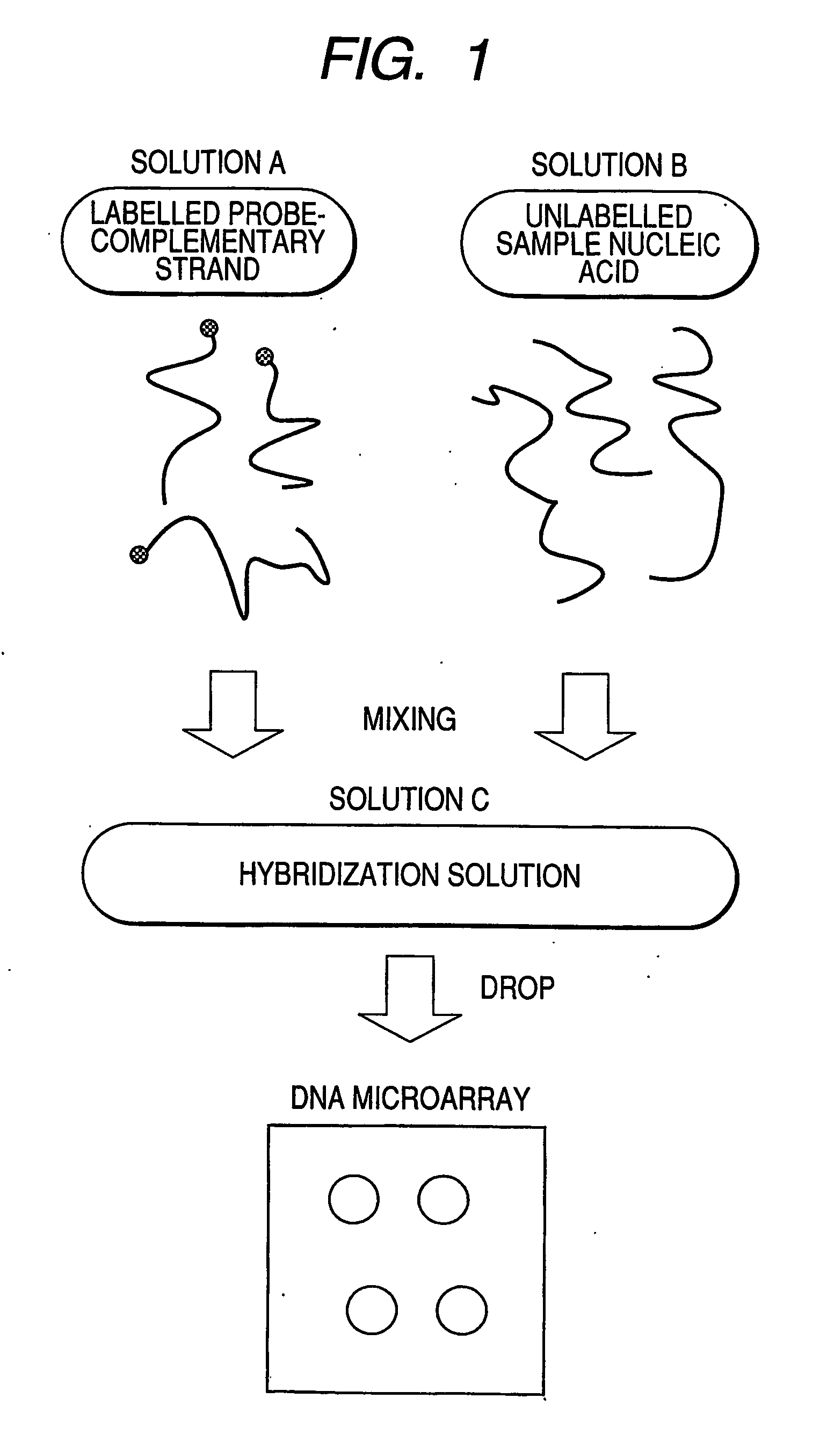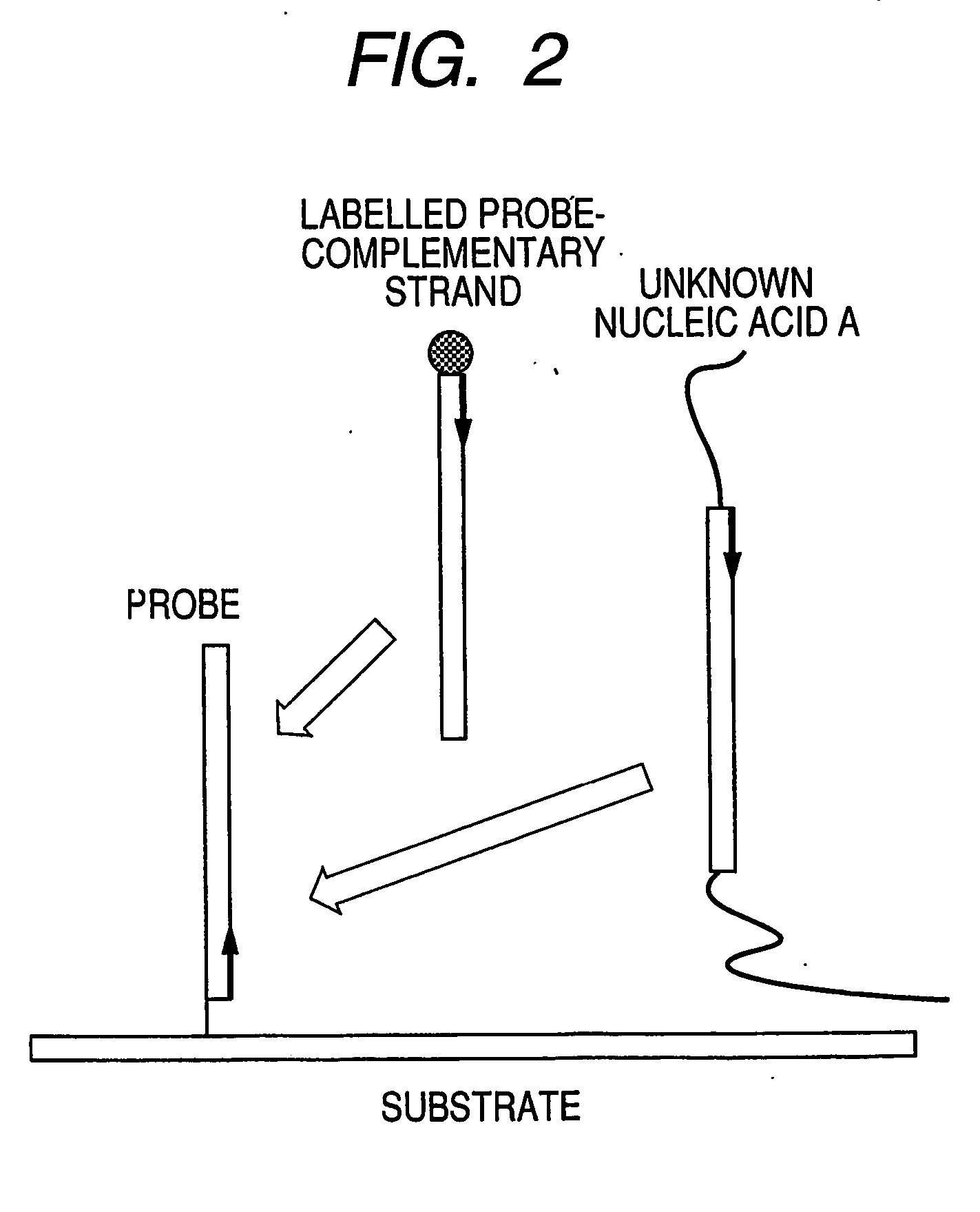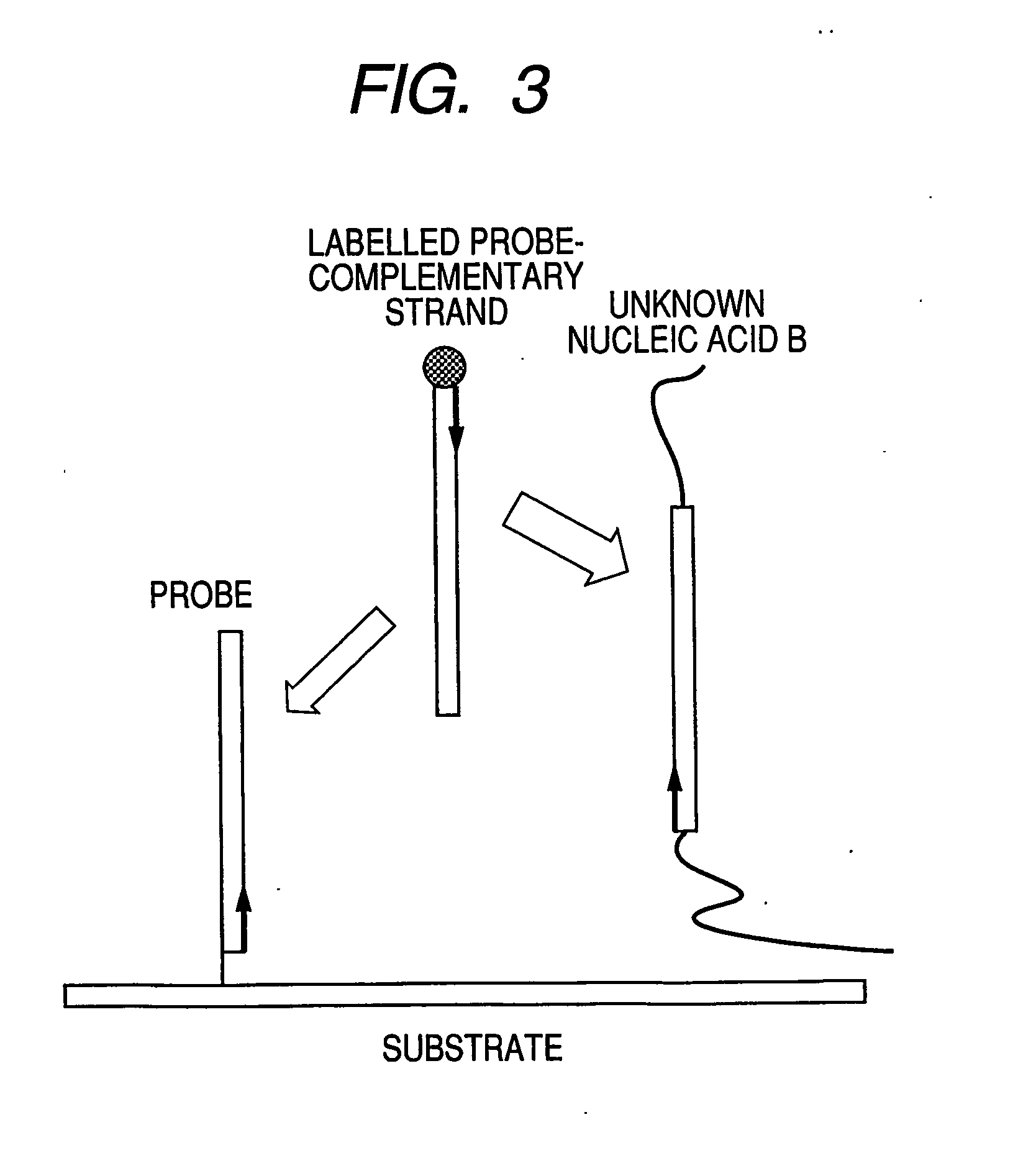Process for assay of nucleic acids by competitive hybridization using a dna microarray
a nucleic acid and dna microarray technology, applied in the field of process for treating immobilized nucleic acid probes, can solve the problems of inability to utilize inexpensive dna microarrays which allow high integration, laborious and time-consuming steps for labeling into samples, and inability to achieve high integration. the effect of time and labor
- Summary
- Abstract
- Description
- Claims
- Application Information
AI Technical Summary
Benefits of technology
Problems solved by technology
Method used
Image
Examples
embodiment 1
[0088]FIG. 1 illustrates steps in the assay process of the present invention. Solution A contains a labeled complementary nucleic acid that specifically binds to probe nucleic acids (hereinafter referred to as probe-complementary nucleic acid), and Solution B is a solution containing an unlabeled target nucleic acid derived from an unknown sample (hereinafter referred to a target nucleic acid or sample nucleic acid). Solution A and Solution B are mixed to prepare hybridization solution C. By spotting the solution C onto a DNA microarray, hybridization reaction occurs between the probe nucleic acids on the DNA microarray and a labeled probe-complementary nucleic acid or an unlabeled sample nucleic acid. For a labeled probe-complementary nucleic acid, a single-stranded nucleic acid having a sequence that hybridizes to a probe nucleic acid is preferably used.
[0089] One example of the probe nucleic acids immobilized on the substrate is an oligonucleotide having a base sequence capable ...
embodiment 2
[0107] In order to carry out the quantification of the target nucleic acid from the unknown sample contained in Solution B in FIG. 1, this embodiment shows an assay process using dilution series.
[0108]FIG. 5 schematically shows a hybridization result when the concentration of the labeled probe-complementary nucleic acid in Solution A of FIG. 1 was varied. FIG. 5 means that in the range of from 1 μM (μmol / 1) to 100 nM, the concentration of the labeled probe-complementary nucleic acid is so high that no decrease is observed in the detected (remained) amount of the label after hybridization reaction with the probe explained in the embodiment 1. On the other hand, when the concentration of the complementary nucleic acid is lowered to 1 nM, the competitive hybridization reaction described in Embodiment 1 occurs, and the intensity of the detected (or remained) label becomes much lower than that observed when the hybridization solution contains only the labeled probe-complementary nucleic...
embodiment 3
[0110] The nucleic acid containing a labeled complementary nucleic acid in Solution A of FIG. 1 exists as a molecule with very high purity as described in Embodiment 1. On the other hand, the nucleic acid from the sample in Solution B is synthesized through several steps of biochemical reactions, and there is a possibility of contamination of impurities in the synthetic process, and there may be nucleic acid of different lengths and types.
[0111] For this reason, the purity of the labeled complementary nucleic acid in the solution A is higher than that of the sample nucleic acid, so that, in principle, the hybridization with the labeled complementary nucleic acid in the solution A is stronger. Therefore, for the present invention where the quantity of the sample nucleic acid is estimated on the basis of reduction of the bound amount of the label, it may be necessary to make the quantity of the sample nucleic acid sufficiently large. In order to solve this problem, this embodiment de...
PUM
| Property | Measurement | Unit |
|---|---|---|
| wavelength | aaaaa | aaaaa |
| temperature | aaaaa | aaaaa |
| temperature | aaaaa | aaaaa |
Abstract
Description
Claims
Application Information
 Login to View More
Login to View More - R&D
- Intellectual Property
- Life Sciences
- Materials
- Tech Scout
- Unparalleled Data Quality
- Higher Quality Content
- 60% Fewer Hallucinations
Browse by: Latest US Patents, China's latest patents, Technical Efficacy Thesaurus, Application Domain, Technology Topic, Popular Technical Reports.
© 2025 PatSnap. All rights reserved.Legal|Privacy policy|Modern Slavery Act Transparency Statement|Sitemap|About US| Contact US: help@patsnap.com



